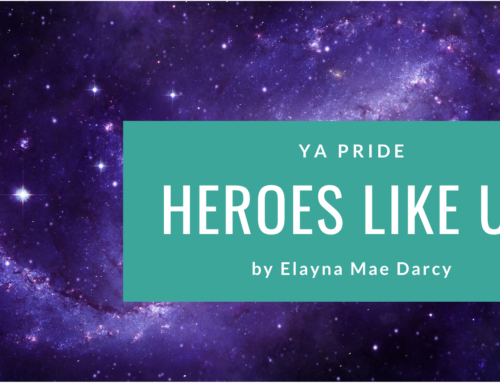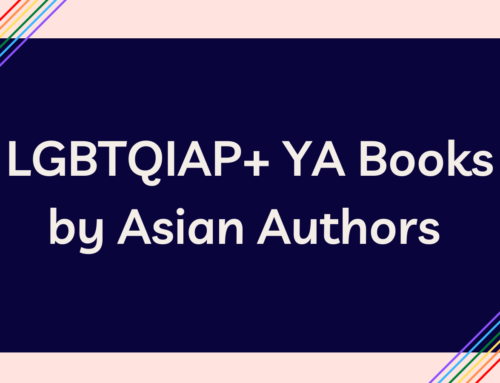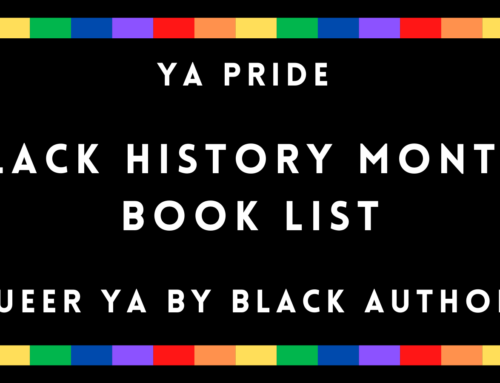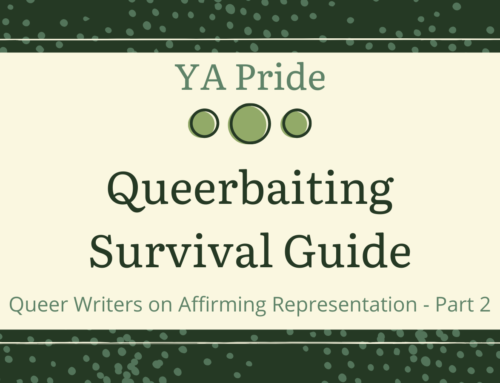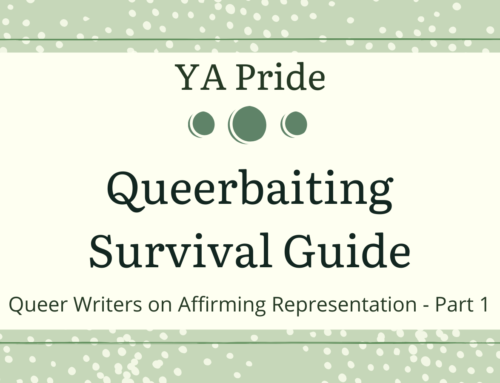The unfortunate truth is that most mainstream YA centres around a boy-girl romance with maybe a bit of magic or tragedy or dystopian violence thrown in. That’s it. There’s very little room on the Teen Fiction shelves at Barnes & Noble for books about girls who kiss girls or boys that kiss boys simply because – apparently – the readership isn’t quite “ready” for those themes yet.
Now, obviously, I understand that Barnes & Noble (and other bookshops) can’t physically make their shops any bigger just to please the fairly minuscule percentage of their readers that are a) readers of YA and b) either queer or interested in queer stories, but at least bookshop chains have managed to find a happy medium which has worked, I think, to the advantage of both writers and readers: minor queer characters in YA novels.
On blogs like this one, I find there’s often a lot of criticism about these secondary characters – how the writer only included them to tick diversity off their checklist, how publishers are claiming to be pro-equality because of them, how they’re built up from stereotypes. And it’s true that, especially a few years back, finding a gay boy in a book usually meant that he was the female protagonist’s BFF and that they went shopping together and gossiped about hot celebrities. Lesbian characters were rarer and I don’t think I ever came across a book with a minor trans character as part of the plotline. Since then, either the books I’ve been reading have changed or the publishing industry has got a grip on itself, and I suspect it’s probably a combination of the two that has led to some richly drawn minor characters that are full of depth and motivation.
In particular I want to talk about the book that prompted me to write this post: Love Letters to the Dead by Ava Dellaira. In terms of form (and to a lesser extent, tone) it reminded me of Stephen Chbosky’s The Perks of Being a Wallflower, since it’s written as a collection of letters written by a high school freshmen. (Incidentally, Chbosky read drafts of the novel as it was being written). It’s about a girl who has just lost her older sister and is tentatively exploring feelings that vary from misery to love, and is definitely worth reading. However, my favourite part of the novel was the sort of “sideline” romance that I personally found more compelling than the primary romance, probably just because the characters were so well created and seemed extremely real. It was between two girls who become the protagonist’s close friends, and is full of humour and tragedy in its own way. For me, this just proves how successful secondary romances and characters can be if the writer takes care to treat them as real people as opposed to just an orientation to be included.
There are numerous other books that are just as successful in this respect, and that seems like a step forward: we’ve got to the stage, finally, where teenagers are expected to not really care if one of the people they’re reading about is queer, and that’s a great place to be. Yes, it’s hard to find these stories when you’re browsing bookshelves, simply because there’s no special label that says “I’M ABOUT GAY PEOPLE!” on the spine in neon green – but that’s not such a bad thing. Queer people fitting in and not being classed as “unusual” is exactly the way it should be in real life and it’s therefore a great achievement that this has already happened in our bookshops.
So maybe go out this weekend and buy a few YA novels to see what you can find. Yes, it’ll probably be six or seven books before you find anyone who isn’t straight and cis, but that’s okay. A couple of years and the industry will shift its paradigm once again. For now, they’re hidden gems: so when you find them, enjoy them.
Georgie is a teen writer and bookworm from England. At the moment she’s working on a gay YA novel of her own and can be found procrastinating on Twitter (@missgeorgie) or else ranting on her blog (georgiepenney.weebly.com).

